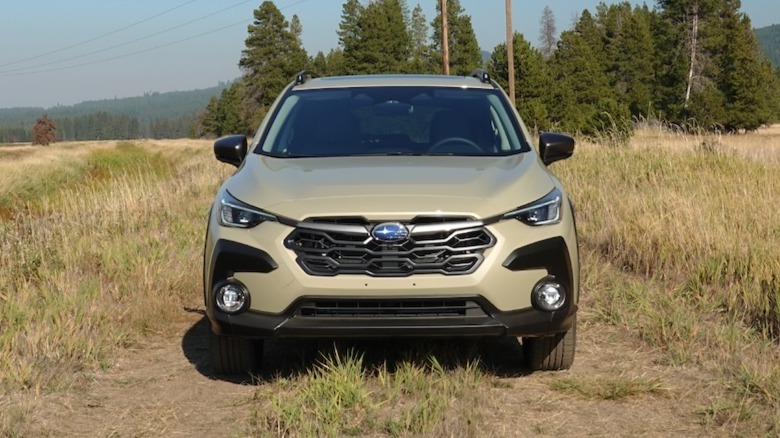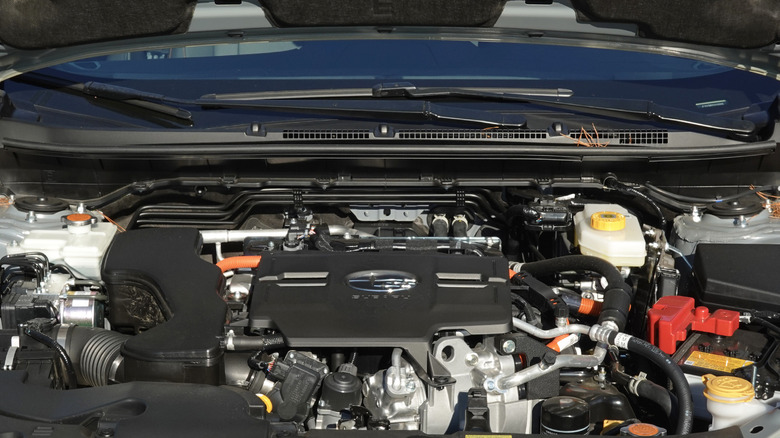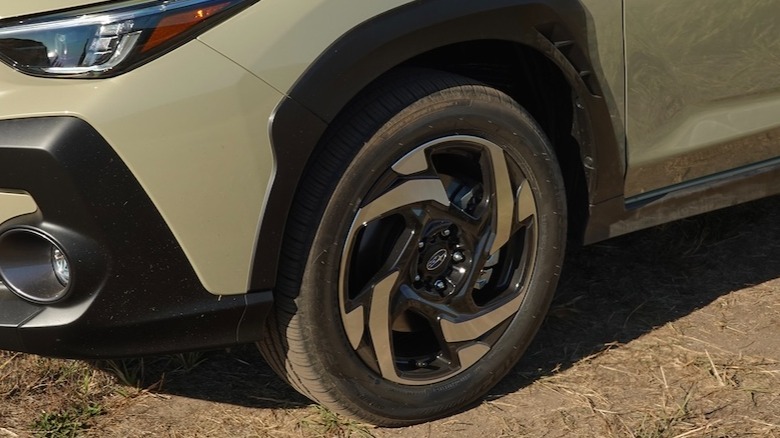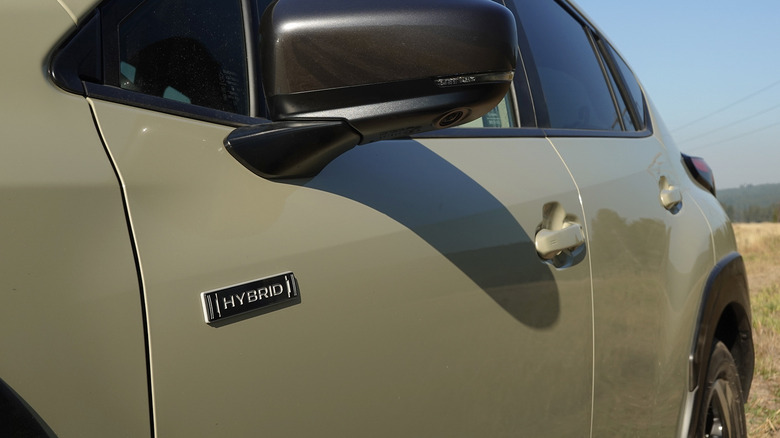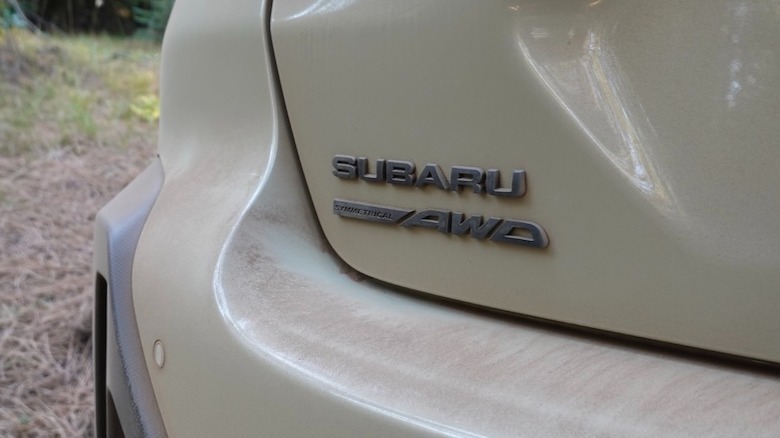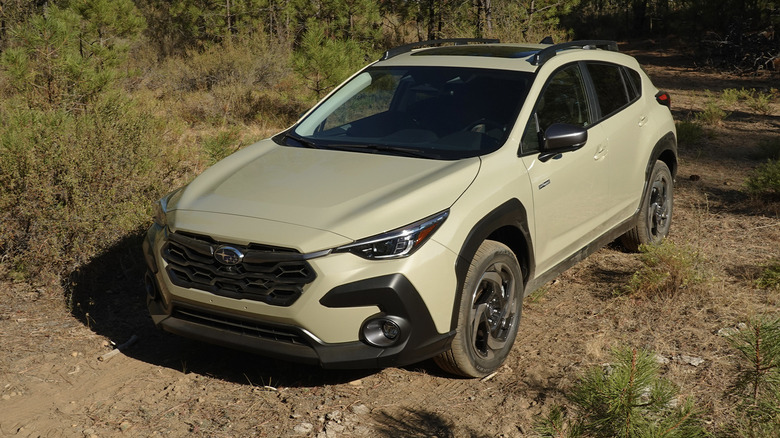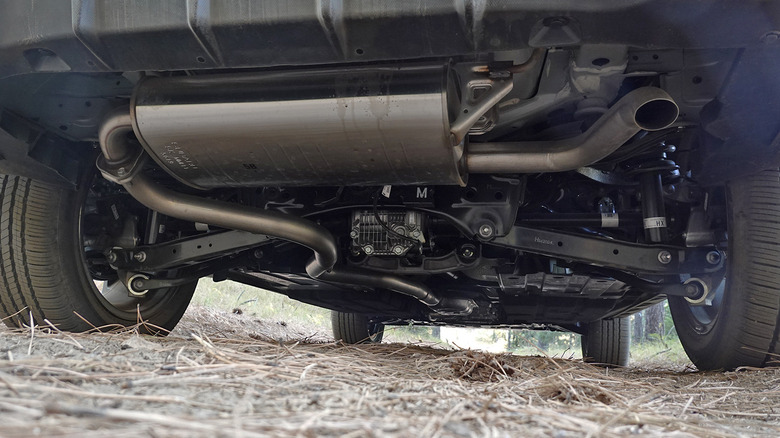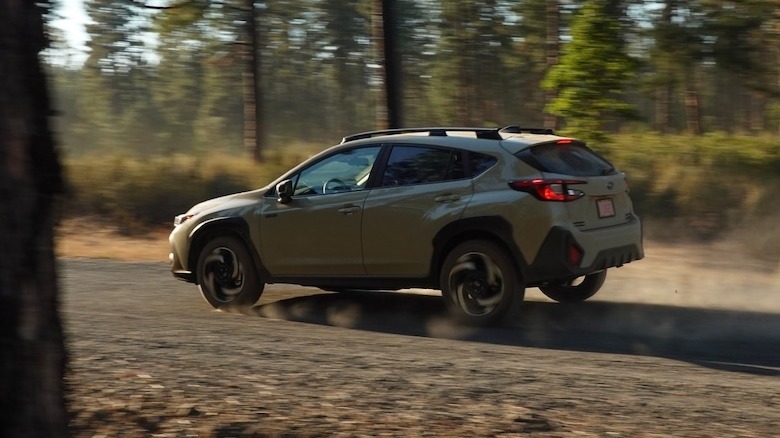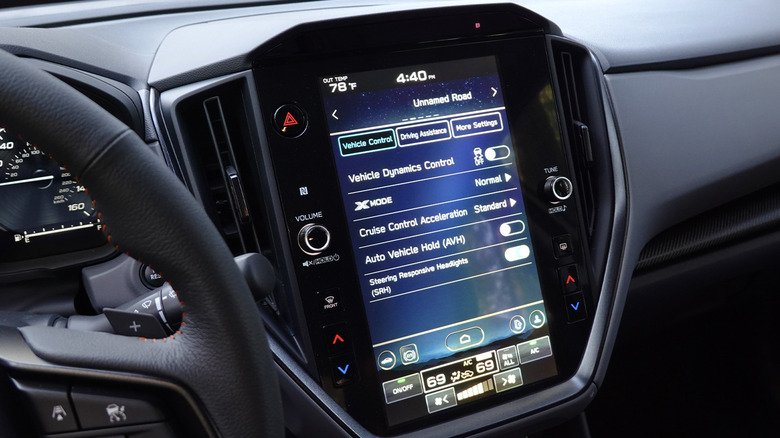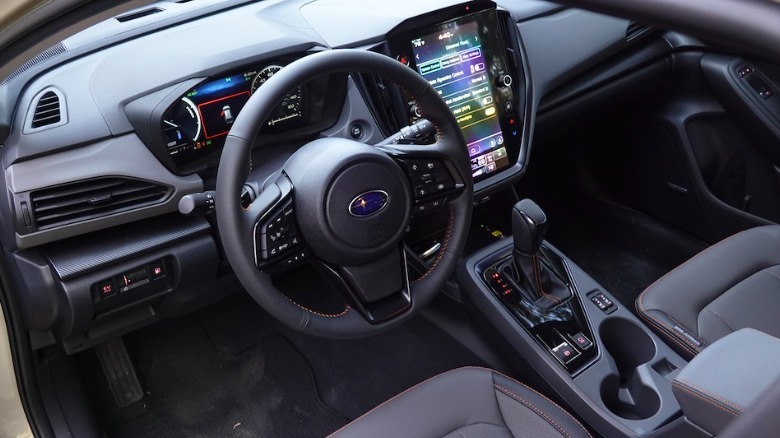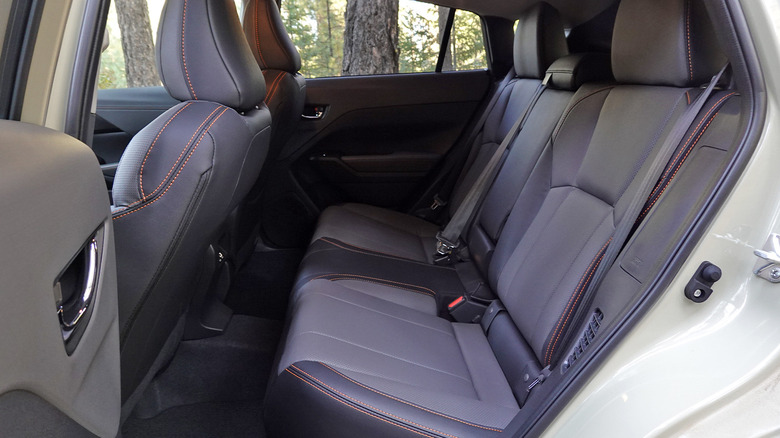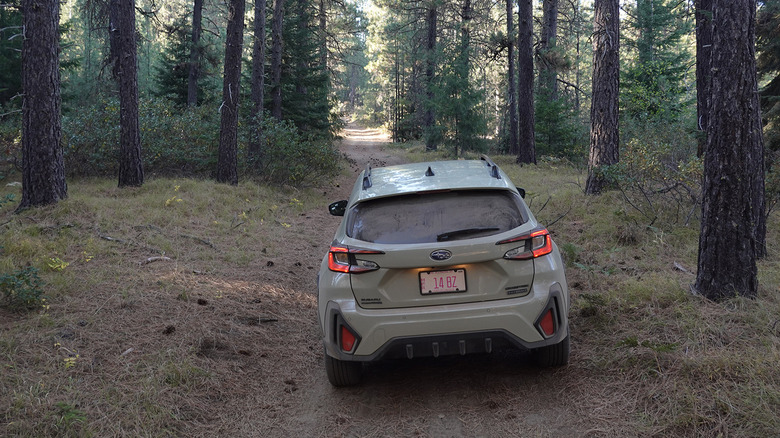The 2026 Subaru Crosstrek Hybrid Is A No-Brainer Buy, But Not For The Reason You Think
On a recent media drive program introducing the sixth-generation Forester's Wilderness trim package, Subaru also brought along a fleet of the 2026 model year Crosstreks equipped with a new hybrid powertrain. Now admittedly, I spent significantly less time driving the Crosstrek over two days in northern Oregon and southern Washington, mainly because the hybrid will not come paired to the Wilderness package's off-roady enhancements. And yet, I can report beyond a reasonable doubt that the new Crosstrek Hybrid marks a major step forward for Subaru's best-seller.
Adding a mild hybrid system only looks likely to help the Crosstrek retain that status as the Outback transitions to more of a "traditional" crossover design for 2026, leaving the Crosstrek as the only hatchback-turned-wagon in the lineup. That's a real shame, since I love a station wagon—and the Crosstrek's sales only seem to suggest that a hefty portion of the American public does too. Especially after hopping out of the non-hybrid Forester Wilderness, time behind the wheel proved that stepping up to the hybrid should come as something of a no-brainer for Crosstrek shoppers.
Cross-shopping the Crosstrek
Stats on paper probably look less significant than real-world driving bore out. Why pay extra for just 14 horsepower? Especially when the Crosstrek Hybrid weighs 3,662 pounds total, for a gain of 350 pounds versus the non-hybrid or a not-insignificant 10%. Fuel economy therefore seems more important, at a 38% improvement versus the naturally-aspirated Crosstrek.
And clearly, the Crosstrek's exterior reveals how little aerodynamics played into the efficiency figures. A few details, including the wheel well vents to prevent turbulence and a few rounded edges like the forward-facing edge of the roof rail mounts, might help a bit. But more importantly, a significant reworking of the gasoline engine, as well as a nifty dual-motor hybrid system, made much more of a difference.
To hybrid or not to hybrid, is not even a question
The hybrid drivetrain differs from the rear electric helper motor seen on some competitors from other automakers. Instead, Subaru retained a fully mechanical all-wheel-drive setup with an Atkinson cycle flat-four, the two motor-generators (MGUs), and a 1.1-kilowatt-hour battery pack mounted below the rear cargo space. The internal-combustion engine holds open the intake valves to reduce resistance for the pistons, prioritizing efficiency over power output. So the total ICE ratings of 162 horsepower and 154 lb-ft reveal that the electrical componentry contribute far more than just another 14 ponies.
The two MGUs mount within the Crosstrek's continuously variable transmission (CVT). The first, which Subaru dubbed entirely-engineeringly MG1, serves as a starter for both initial ignition and smoother function of the auto stop-start. MG2 then powers the rear wheels and recuperates electrons from regenerative braking, while allowing for a modest full EV mode with serious limited range (especially compared to the outgoing Crosstrek plug-in hybrid's 17 miles) and a max speed of just 19 miles per hour.
So much more than 14 horsepowers gained
A planetary gearset within the CVT housing helps everything play nicely together, though the CVT itself still uses somewhat hilarious fake gearshifts to prevent typical droning under acceleration or at cruising speeds and inspire at least some semblance of driver engagement.
Try not to imagine a Prius, I suppose, but rather focus on the fact that stepping up to the Crosstrek Hybrid adds only $3,300 for the Sport trim or $2,000 for the Limited (that delta due mainly to the inclusion of additional options alongside the powertrain alone). And instead of obsessing over the relatively minimal 14 horsepower gained at peak output, remember the critical area under the curve of a dyno sheet readout. In every single instance of driving, the hybrid simply is that much better.
More power, more better
Combining gasoline and electric power results in smoother and quicker throttle response off the line, easier highway passing, and more comfortable highway cruising—the latter largely because the CVT less frequently needs to wind up into the droning range. In fact, MG2 even sounds somewhat similar to a turbo spooling at full throttle, another welcome improvement when compared to the naturally aspirated Forester's unpleasant straining at almost all times.
Meanwhile, the extra weight of a few hundred pounds almost entirely vanishes. I suspect the mass might even help to tamp down some of Subaru's less refined suspension tendencies. Back to back, the Crosstrek without uprated shock dampers actually rode smoother than the Forester Wilderness on asphalt, despite the former's larger 18-inch wheels and less tire sidewall. All while managing the same ground clearance as the non-hybrid Crosstrek. And even throughout a few sojourns onto dirty trails, the Crosstrek on Falken Ziex ZE001A all-seasons never got too much more prangy—though I never hit anything nearly as chunked up as in the Forester.
An outdated center screen might be the only flaw
Unlike the Forester Wilderness, the Crosstrek Hybrid uses the same shock and strut dampers as the naturally aspirated models, albeit with revised valving to compensate for the additional weight. Even the steering feels more solid, though, perhaps due to a bit more weight on the nose. And all-wheel-drive as a standout for Subaru always handles the additional power throughout the rev range with ease. Despite the obvious disadvantage of using a fully mechanical all-wheel-drive system, rather than a fully electric helper motor, the Crosstrek Hybrid still manages a more-than-reasonable 36 MPG rating for city, highway, and combined alike.
Whether in Sport or Limited trim, the Crosstrek Hybrid also receives a standard digital gauge cluster with a smart readout for powertrain and battery status. But this actually makes the 11.6-inch Starlink center touchscreen seem even more outdated, as a carryover from previous years in Subaru service. As a plus, I do appreciate the lack of additional plastic cladding on the exterior, which Subaru explained away as a factor of the Crosstrek Hybrid's international appeal.
These will therefore be built in Japan, rather than Indiana, which may eventually cause tariff concerns—who knows—but in the meantime, means that the American proclivity for tasteless plastics actually dials back a bit. Just don't ask about the rectangular badge on the front doors, which sit at a cockeyed angle to match the side aero strakes rather than level, and wind up looking absolutely sloppy.
Almost no sacrifices in the name of power and efficiency
The new Crosstrek Hybrid's rear cargo floor sits noticeably lower than the outgoing plug-in, which helps to justify buying a station wagon in the first place. And the interior volume throughout definitely trends more toward wagon than hatchback. At six-foot-one, I fit just fine in the front seat. I then hopped in the backseat to check leg and headroom with the driver's seat in my ideal position. No problem. Perhaps a minimal jump in passenger volume, plus the increased cargo space made possible by the smaller battery pack versus the outgoing Crosstrek, explains why Subaru made the decision to ditch the station wagon layout for the next-gen Outback.
The battery still takes up any space that might have housed a spare tire, though, another reason that potentially explains why Subaru opted against a Wilderness variant, rather than the suspicion that adding further to an unbelievably low starting sticker of $33,995 for the Sport package and $34,995 for the Limited might dull some initial curb appeal.
But really, very little competition exists to combat the Crosstrek's combination of attributes, not just in this price range but at all here in the United States. Name another compact wagon with all-wheel drive, mild off-road capability, and solid fuel economy—nope, nothing comes to mind. Volvos cost a hefty chunk more, while the Audis and Mercedes-Benzes of the world up the ante to a whole 'nother level.
2026 Subaru Crosstrek Hybrid verdict
In fairness, the Crosstrek Hybrid still very much slots in as an affordable vehicle that feels much cheaper than the Forester Wilderness, despite the vegan upholstery or additional sound deadening versus an ICE model. Will a potential new Outback — with enough packaging allowance for both a spare and a battery pack — fill a gap in the lineup between Crosstrek Hybrid and Forester Wilderness, with the better powertrain and a bit more space plus more capability when the going gets tough? Or hopefully, customer reception and demand can press the issue—with a tailgate spare or at least a space-saver wheel and tire.
In the meantime, with no hybridized Crosstrek Wilderness available for the foreseeable future, I suspect most buyers should simply just swap on all-terrain tires anyhow. And that only proves how much the hybrid powertrain is so clearly the right call, which only supports my suspicion that Subaru may well revisit this decision in the near future.

